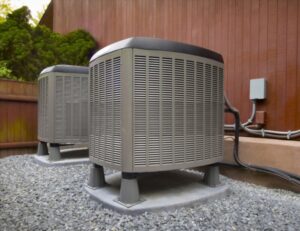You may have heard that the air source heat pumps can deliver 200% to 500% thermal energy higher than the input electrical energy. When you buy an air source heat pump, you were assured or expect that an air source heat pump to deliver the heat output consistently throughout the various season of the year. That is not always the case.

The heat pump performance varies with ambient temperature. Normally, the air source heat pumps take heat from the ambient air and transfer it to water circulating through the condenser. When the ambient temperature becomes low, the heat available for a heat pump to heat the water will also become low. The heat pump needs to do a lot of work to drive the heat from cold air to hot water flowing through the condenser. This, in turn, reduces the heat pump heating capacity. So how can you check the heating efficiency of a heat pump if it varies with different seasons? That is when the Heating Season Performance Factor or HSPF comes in!
What is Heating Season Performance Factor?
The HSPF number indicates a heat pump’s heating efficiency rating. That number represents the total heat output of a heat pump, including the supplementary electric heat, during the normal heating season in British Thermal Units or BTUs, as compared to the total electricity consumed in watt-hours during the same period. The HSPF is a heat pump’s heating version of SEER or Seasonal Energy Efficiency Ratio. Typically, the higher the HSPF, the more efficient the heating performance of your heat pump.
Heating output is measured in BTUs. This number is divided by the energy the heat pump consumes in watt-hours. The complicating factor is the term “season.” A heat pump works harder in different seasons, depending on the difference between the ambient/water temperatures and how long the unit operates during those times. The HSPF attempts to incorporate those factors. Therefore, while this complicates the math, the basic meaning is the same. A higher HSPF means a more efficient heat pump and more long-term energy savings. Both the HSPF and SEER can be converted to a COP, or Coefficient of performance, which uses watts for both the output and the input. It is just a matter of dividing the HSPF or the SEER by 3.412. Note that a heat pump capable of dual operation will have a heating COP and a cooling COP!
Typically, the HSPF rating varies from 7 to 10 for domestic heat pumps. Currently, there is no standard HSPF rating for high-temperature heat pumps in India. Only ISEER is implemented for measuring the efficiency of the cooling system. Soon, the standards for the HSPF rating of high temperature will come out. However, before buying the heat pump, make sure that the heat pump capacity could deliver the heating requirement through all the seasons of the year.
Hope you find these terms useful. To know sustainable heat pump solutions and cost benefits, check out our products to know more.
